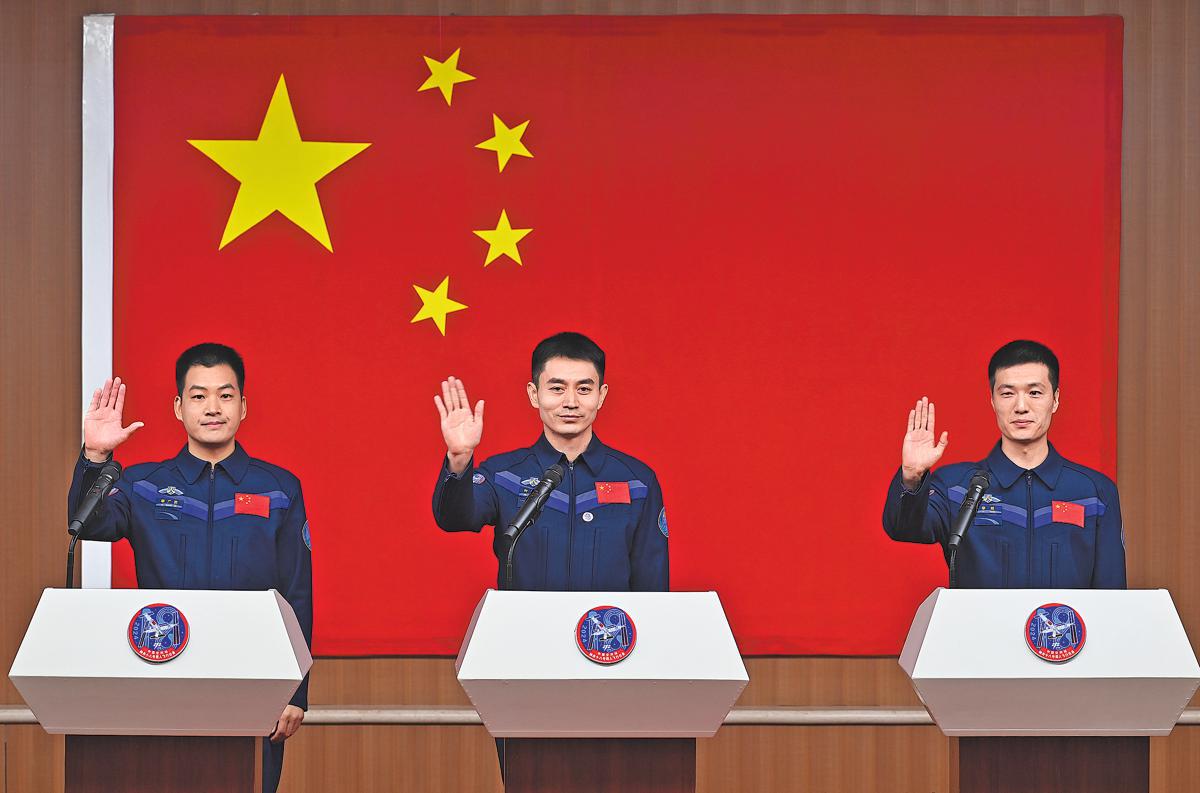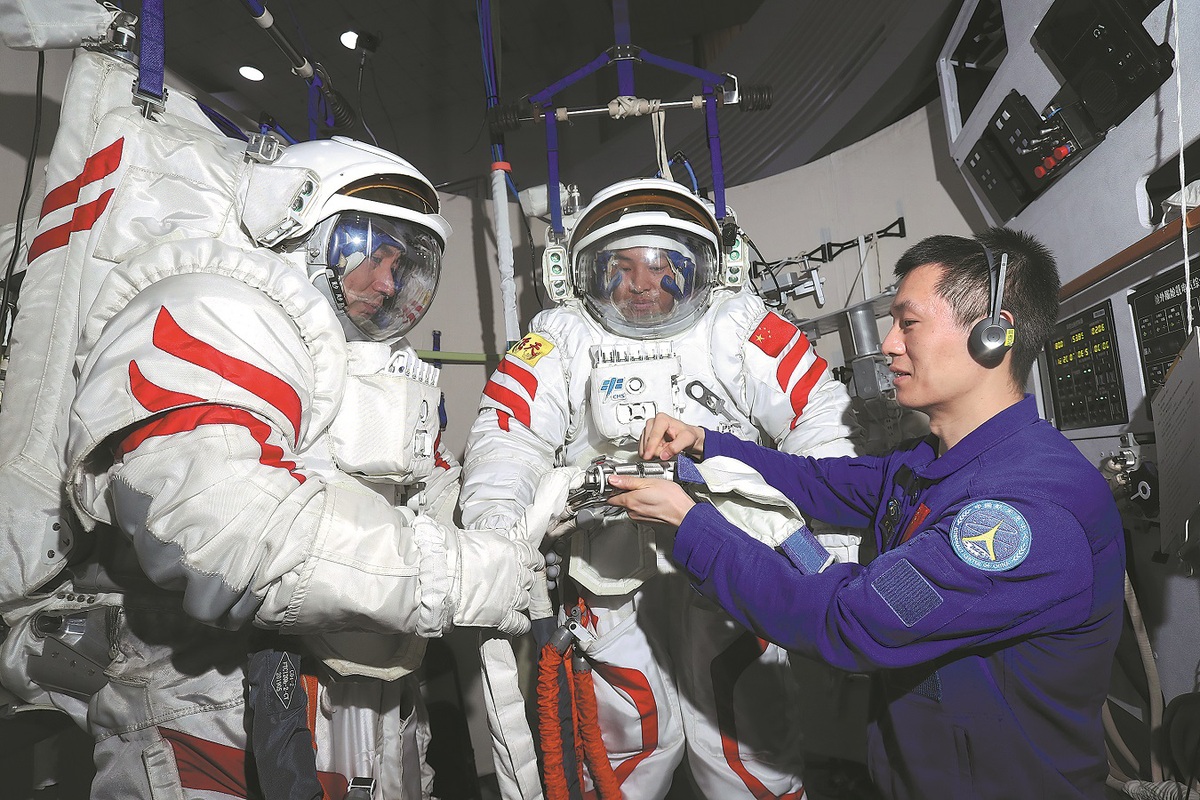
Crew members of the Shenzhou XVIII mission Ye Guangfu (center), Li Cong (right) and Li Guangsu meet the media at a news conference at the Jiuquan Satellite Launch Center on Wednesday. [Photo by Wang Jiangbo / For China Daily]
The three post-1980 generation crew members of the Shenzhou XVIII mission said on Wednesday that their similar professional backgrounds and mutual trust will help them complete all the objectives set for the mission.
The Long March 2F rocket carrying the astronauts aboard the Shenzhou XVIII spacecraft is set to lift off from the Jiuquan Satellite Launch Center in Northwest China at 8:59 pm on Thursday, Lin Xiqiang, deputy director of the China Manned Space Agency and spokesman for the mission, said during a news conference on Wednesday at the launch center.
The crew members are Senior Colonel Ye Guangfu, who is the mission commander, Colonel Li Cong and Colonel Li Guangsu. Ye was also a crew member of the Shenzhou XIII mission that returned in April 2022, while Li Cong and Li Guangsu will be making their first spaceflight.
Ye, 43, said that unlike his first mission, which was full of excitement because it fulfilled his dream of becoming an astronaut, this trip will require him to bear greater responsibility as mission commander.
Nonetheless, Ye said while meeting the media at the launch center on Wednesday, "Every mission to space is a new start."
"Besides recovering, I also had to return to training in the past two years. And the structure of the space station is new to me and more complicated to operate. Also, leading a team is another new challenge," he added.
All of the crew members were trained as pilots in the People's Liberation Army Air Force and share other similarities in age and experience, said Li Cong, who is 34.
"To ensure the smooth running of the space station with complicated operation systems, all the operations must be precise, and the mutual trust of the crew members is required," he said.
Li Guangsu, who is 36, will be responsible for conducting experiments in space. He said he is looking forward to experiencing life in weightless conditions.
"Besides work, I also want to take a good look at the beautiful blue planet and our country. Furthermore, I want to see if the stars do twinkle, for my child," he added.

Shenzhou XVIII astronauts Ye Guangfu (left), Li Guangsu (center) and Li Cong participate in a training session on extravehicular activities on Jan 15. XU BU/FOR CHINA DAILY
Lin, the China Manned Space Agency deputy director, said the main objectives set for the mission include the handover of the space station from the Shenzhou XVII crew and carrying out a series of experiments and missions during the new crew's six-month stay.
According to the plan, the Shenzhou XVIII crew members will return to the Dongfeng landing site in late October.
During the mission, the country's first in-orbit aquatic ecological research project will be carried out. Using goldfish algae and zebrafish to establish a self-cycling aquatic ecosystem in orbit, the aim of the project is to make a breakthrough in the cultivation of vertebrates in space, Lin said.
Cang Huaixing, a researcher at the Chinese Academy of Sciences' Technology and Engineering Center for Space Utilization, said the experiment could help people build aquatic ecosystems and food-producing systems in space in the future.
Besides continuing to recruit and train Chinese astronauts for upcoming space and lunar missions, China will also promote the participation of foreign astronauts and space tourists in flights to the space station, Lin said, adding that China is confident that its space station will welcome more new members from different backgrounds in the near future.
Lin also said that China's crewed lunar exploration program is progressing smoothly, with the development of major component systems, such as the Long March 10 carrier rocket, the crewed spacecraft Mengzhou, the lunar lander Lanyue and the lunar landing suit, having been completed, with prototype production and tests being carried out.
In 2023, crewed lunar exploration was approved by the central government for launch and implementation, with the aim of landing Chinese on the moon by 2030.
The plan is to launch two carrier rockets to send a crewed spacecraft and a lunar lander into lunar orbit. The spacecraft and lunar lander will dock with each other, after which the astronauts will enter the lander, Lin said.